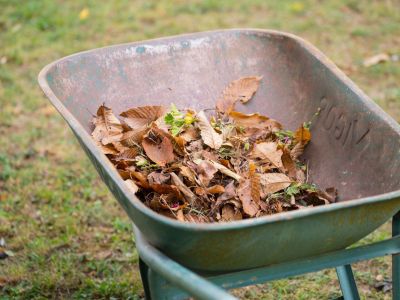November Gardening Chores
The creation of a regional to-do list will help ensure that growers stay on the path to completion of crucial garden chores before the winter season arrives. Let’s examine these regional garden chores more closely.
Northwest
As the weather begins to cool and becomes progressively more wet, November gardening chores in the Pacific Northwest include preparing perennial plants for coming cold and possible snow. Mulching will ensure that plants have the best chance of survival into the spring. Those still gardening in November should also focus on the completion of fall planting tasks. This includes the planting of spring flowering bulbs, perennial shrubs, and any wildflower seeds that will bloom the following growing season.
West
Those living in more moderate climates in the West will continue to steadily harvest both warm and cool season crops in November. Additional succession plantings can also be made at this time where applicable. Periods of cooler weather make gardening in November an ideal time to begin planting perennials, shrubs, and trees. Regional garden chores will vary depending upon location. In gardens which have received a frost, November is a good time to begin cleaning and removing dead plant matter and debris.
Northern Rockies and Plains
November gardening chores revolve around preparing for the colder weather to come. At this time, Rockies and Plains growers should begin the process of covering and mulching perennial flowering plants. Complete any garden harvests of cool season vegetable crops. Canning, preserving, and cellar storage will allow gardeners to enjoy their produce throughout the months to come.
Southwest
The arrival of cooler temperatures becomes more obvious in November. This means that Southwest gardeners can continue to harvest and succession sow various cool season crops. Though the temperatures are milder during this time, many regions may not receive much rainfall. Growers will need to continue monitoring and irrigating their gardens, as needed. Consider preparing frost blankets and row covers this month, as many locations may see their first frosts in November.
Upper Midwest
In the Upper Midwest region, complete harvesting of cool season vegetable crops in preparation of the threat of early season snowfall. Begin preparing various perennial flowers and shrubs for winter by mulching thoroughly.
Ohio Valley
Continue to harvest from cool season crops in you live in the Central Ohio Valley. As the weather turns colder, these crops may require the use of row covers or frost blankets during periods of exceptional cold. The Ohio Valley regional to-do list marks the last opportunity to plant spring flowering bulbs such as tulips and daffodils before the ground begins to freeze. Complete any planting tasks related to the sowing of groundcovers, wildflowers, or hardy annual flowering plants which will bloom the following spring.
Southeast
November in many parts of the Southeast allows for the harvest of both cool season and warm season vegetable crops. Many locations in this region will see their first frost during the month of November. Gardeners can prepare for this with the utilization of row covers and/or frost blankets. Begin the process of revitalizing garden beds for the next growing season. This includes the removal of weeds and the addition of much needed compost or soil amendments.
South Central
In the South-Central region, growers will continue to harvest both cool season and warm season vegetables throughout the month of November. Cool season crops, specifically, may continue to be succession sowed. Southern gardeners also note this month as the time to begin sowing cool season flower seeds which will bloom from winter and into spring. Some regional gardening to-do lists will need to consider frost protection, as some locations will see their first frosts of the season.
Northeast
Many gardeners in the Northeast will need to complete the planting of spring bulbs in November, as long as the soil has not frozen. Growers will need to protect perennial plants, as well as evergreens, from potential damages caused by snow or severe cold temperatures. Harvest any and all remaining cool season vegetable crops from the garden before the first snowfall arrives.
